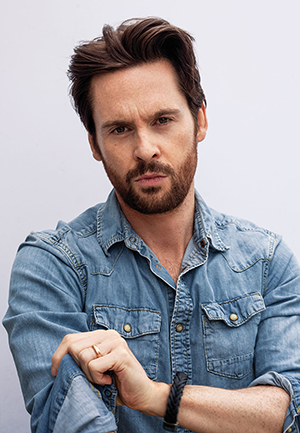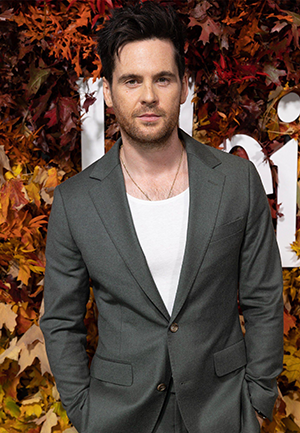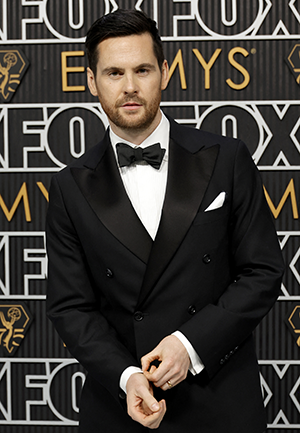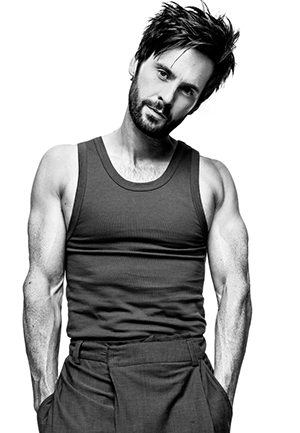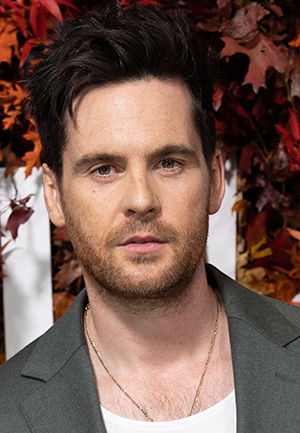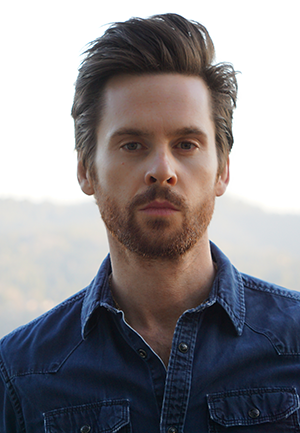Interview from ITV1 Monroe Press Pack - Feb 2011
Tom Riley plays Lawrence Shepherd, an anaesthetist who has worked alongside Neurosurgeon, Monroe, for a number of years. Although Shepherd can often be the subject of Monroe’s jokes, their relationship is as solid as a rock.
“Their relationship is born out of their profession. They’re very lucky to have such a strong partnership. Part of the reason their relationship works so well is although they are very different individuals they have a very similar sense of humour. They spend each day of their working lives together, caring and treating patients, and they completely trust each other.
“Shepherd accepts that he’s going to be knocked down by Monroe from time to time and be the butt of his jokes, but it’s not the end of the world for him and he’s strong enough to take it. Whether they’d be best friends outside of their profession I don’t know, but the job has made their relationship necessary and fulfilling as a result.
“During the research Jimmy and I did together, everyone we met told us that the surgeon and the anaesthetist’s relationship are crucial. It’s actually the most interesting dynamic in a medical team and was the first thing we worked on.”
As Monroe’s anaesthetist, Shepherd often finds himself caught in the middle of his on-going war with Cardiac Surgeon, Jenny Bremner, played by Sarah Parish. “Bremner is seen as the annoying girl at school who gets in the way and spoils their fun. It’s clear from the outset that there’s a strong personality clash between Monroe and Bremner. As surgeons at the same hospital, they’re in direct competition. Both have very different approaches with their patients. Monroe is very personable, while Bremner believes it’s better to keep patients and their emotions at arm’s length. Regardless of what the other has going on in their work and private lives, neither cuts the other any slack.
“Shepherd doesn’t feel as reticent towards Bremner, but can’t show this, as it would only upset the balance of his relationship with Monroe.”
Shepherd is a far cry from Tom’s previous on-screen character, Gavin Sorenson, in the critically acclaimed drama Bouquet of Barbed Wire screened on ITV1 last year.
“Gavin had a huge back-story in Bouquet of Barbed Wire. I faced a lot of challenges in getting Gavin right. The two characters are very different, which is one of the reasons I was drawn to play Shepherd in Monroe. It gave me the chance to play someone who is likeable, a nice guy who smiles rather than grimaces.
“The challenges I faced with Shepherd were with his job as an anaesthetist. Before filming, I wanted to understand what being an anaesthetist would involve and the type of person who chooses this profession. To help establish this I met Dr Audrey Quinn, an anaesthetist at Leeds General Infirmary.
“Not only was I able to observe her in theatre but I was also given the opportunity to discuss why she was drawn to anaesthesiology, and how her personal life reflected this.”
“Anaesthetists have a very interesting relationship with patients. They are the last person a patient sees before they are anaesthetised and they need to have good people skills and be able to give reassurance to their patients.”
During further research with medical teams across the country, Tom and fellow cast member James Nesbitt visited St George’s Hospital in London where they observed brain surgery. Tom recalls the experience as ‘one of the most amazing mornings of my life’.
“On the morning of our read-through in London, Jimmy and I met a male patient at St George’s Hospital. The patient was being treated to by an incredible neurosurgeon called Henry Marsh because he’d been experiencing a reoccurring tumour. Alongside our producer, Jennie Scanlon, we were given the opportunity to observe surgery. From inches away we were able to see the registrar operating on this mans brain whilst Henry talked us through the procedure.
“There’s an incredible sensation that overcomes you just as you’re about to look at a human brain. Because Jimmy and I were stood next to each other there was a shared moment of camaraderie. The brain is unlike anything else you’ve ever seen. I knew Jimmy couldn’t faint in front of me, nor could I faint in front of him, and actually once we’d inside the skull for the very first time, everything else was quite clinical.
“After surgery, we were able to go in to the ward and speak to the man who had just undergone treatment. Whilst we were there an emergency case came through. A man they knew very little about had been assaulted outside a pub. They couldn’t find a record of who he was or the extent to which the damage had affected him, but they knew he was in a serious condition and that they had to operate immediately. We were offered the opportunity to witness surgery, a completely different approach to the one previously seen. We got to observe the same medical team working so much faster and quicker. The man suffering with the head injury was very confused and aggressive, so anaesthetising him was a lot harder, especially as he was waving his arms around. It was fascinating to see the different approach the medical team had to adopt in an emergency. Theatre was very intense and silent, different to that of a non-emergency, where at times there is a lot of banter.”
Aside from watching operations, meeting patients and medical teams, Tom tried, as hard he could, to have as much knowledge of the medical language as possible. “It’s quite difficult when there’s so much medical jargon to learn and understand, but it’s also very important to get it right. To aid us during scenes the production team ensured that every procedure and operation was labelled out with specific details as to what would be required from the medical team and why. Nothing was ever done just for the sake of having it in the script.
“For the majority of filming we would have a medical advisor on set. If there wasn’t someone present, Helen, our script editor, had someone on hand to give advice.”
Tom admits he felt the pressure heat up on set when he and his fellow cast members had to film big medical procedures.
“The days when we would film in theatre were in fact the most stressful. Everyone was so determined to get it right. As the neurosurgeon at the centre of this drama, Jimmy had to be in control.
“It was the same with Sarah Parish who plays Cardiac surgeon Jenny Bremner. Although they were both performing surgery on prosthetics, everything had to be accurate and as a consequence everything felt very tense. “When we got it right, the real life surgeons that were consulting and overseeing scenes, would get so excited and leap out from behind the monitors and yell ‘that’s amazing, that’s it! Well done!’”
Tom reveals that working with writer, Peter Bowker, was too good an opportunity to miss, and hopes the viewing audience will have a bigger appreciation for the NHS.
“I’m a big fan of Peter’s work. He is never anything other than fantastic in everything he writes and I didn’t want to miss the opportunity to work with him. Likewise with Paul McGuigan. I loved Sherlock and I’m a big fan of his film work too. It seemed like such a fantastic chance to work with both men and with Mammoth Screen, a production company who I respect. It would have been very difficult to say no.
“The team behind Monroe care so passionately about this project and were determined, every step of the way, to represent medical teams accurately. They wanted to make something that’s real and what reflects medical care in the UK today. The audience will hopefully go away with an appreciation of the medical difficulties they are faced with. You don’t see much of the behind the scenes in Monroe, it’s very much about the cases that come in, the patients and how lives are affected. I think it’ll open people’s eyes to the difficulties of surgery and the weight that surgery can put on those that do it.”
